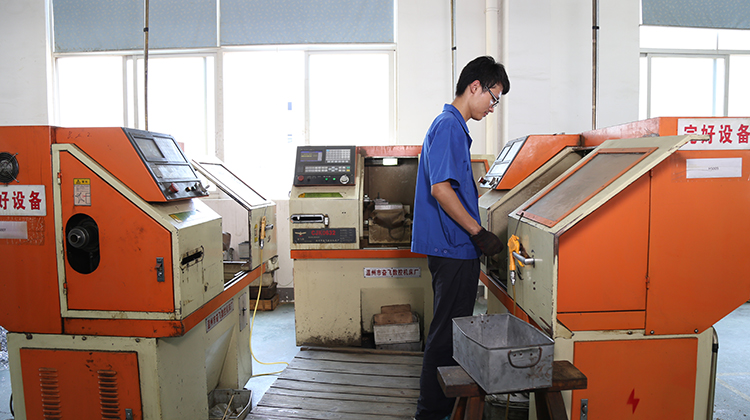HUASHENG owns and operates a CNC workshop with a workspace of more than 800 square meters. This workshop is fully equipped with over two dozen CNC lathes and tapping machines which form the high-quality H59-1 brass and other raw materials into over one thousand diverse types of product components. Engineers and technicians possess a wealth of industry related experience. It takes only 40 seconds for them to accomplish each working procedure by controlling three CNC machine tools, which provide great precision, efficiency and enthusiasm. In addition, we have a very strict approach toward product testing. In addition to regular inspections which are conducted hourly, we also conduct the weighing and visual inspection for semi-finished products. Then, we perform overall dimension testing, surface smoothness testing and other types of testing. Only those components which have passed all tests enter our final warehouse as inventory.
Here we are assembling a batch of wall-mounted oxygen suction products, and these products will be exported to the overseas market. Technicians are highly skilled in accomplishing a series of working processes, including: purification, valve rod pre-adjustment, flow meter assembly, humidification bottle tightening, and so forth. After the flow of the finished products has been measured, we make a comparison with the reference measurement standard, thus ensuring the flow of oxygen of our products is highly precise and has zero deviation. In addition, all our products have undergone air tightness testing. Only those qualified products which have no gas or liquid leakage will be delivered to our customer’s destination.
Our company has purchased H519 high-quality brass and always maintains an ample inventory of more than 15 tons, which can fulfill customers’ requirements for high-speed delivery.
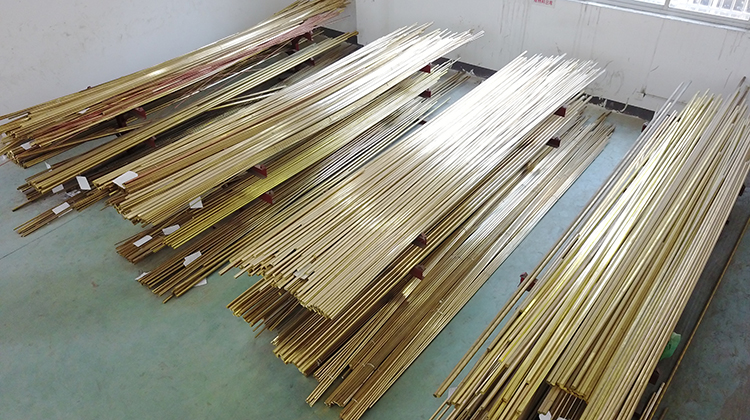 Brass storage area in the materials warehouse
Brass storage area in the materials warehouse
Demonstrated here is our largest-scale machining workshop, where our staff usually operates numerically controlled lathes. This workshop spans around 800 square meters and is home to more than 30 productive employees. All metal accessories of our products are manufactured in-house. We have developed a total of more than one thousand types of metal accessories.
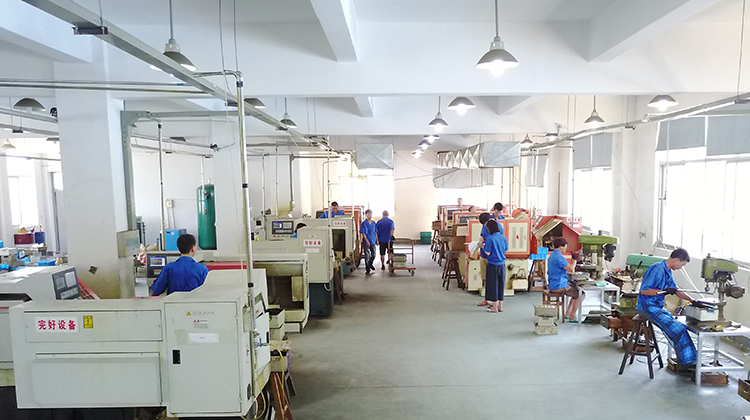 A full view of the machining workshop
A full view of the machining workshop
This highly-skilled technician was using a tapping machine to process the high-quality brass base of the oxygen outlet.
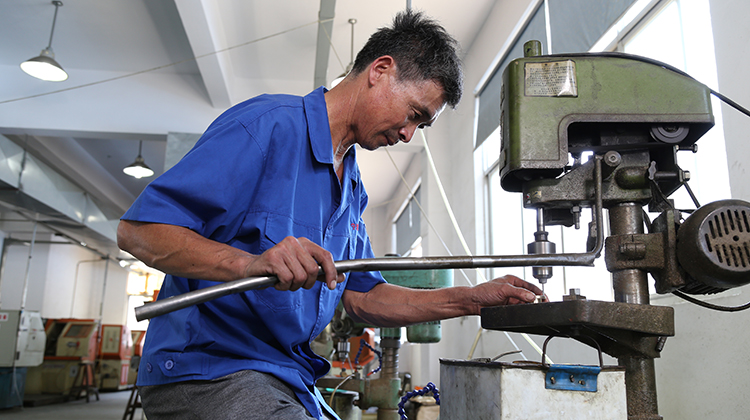 Our technician was tapping a component.
Our technician was tapping a component. 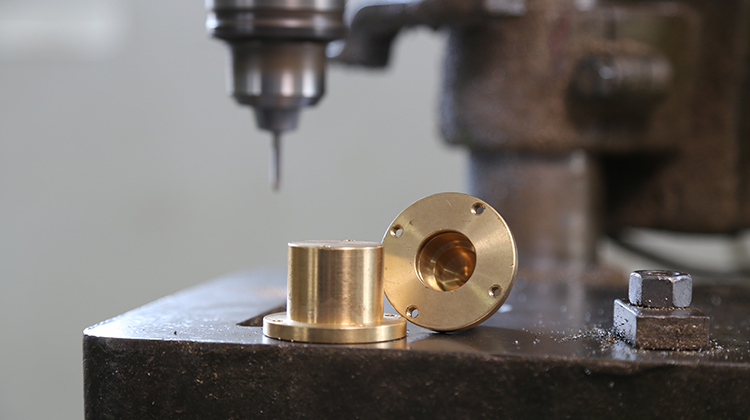 Tapping was done on the base of the oxygen outlet.
Tapping was done on the base of the oxygen outlet.
Each working procedure can be accomplished by a single person using three CNC machine tools within 40 seconds.
Our company has invested in 21 CNC machine tools which can perform drilling, milling, boring, lathing and other working procedures. The lathe operates with a precision of up to 0.02mm. The technician has over three years of work experience. Three sets of machine tools can work together to accomplish loading and unloading within 40 seconds. They can operate with an extremely high level of efficiency. In addition, regular measurement is performed once every hour.
 Numerically controlled lathe processing in detail
Numerically controlled lathe processing in detail The numerically controlled machine tool was drilling a hole.
The numerically controlled machine tool was drilling a hole.
Our company has produced more than one thousand types of products. Most of the products are equipped with their own clamping tools.
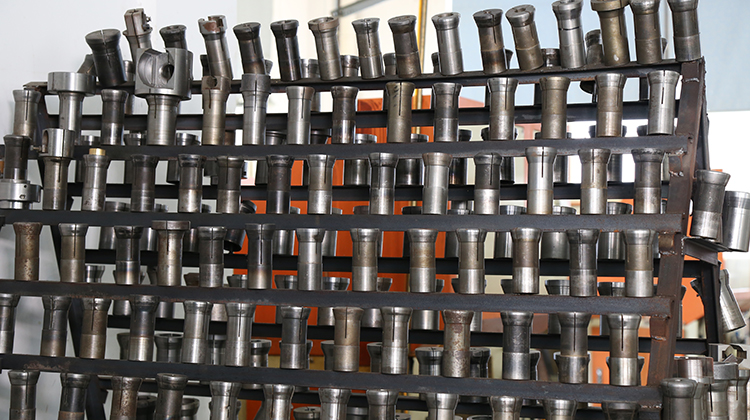 Product clamping tool
Product clamping tool
Here is our semi-finished components storage area. Those components that haven’t been completed are managed in a centralized manner. We are not only required to count and weigh the components, but we also need to conduct a full range of visual inspection for the purpose of quality control. After that, those components are allowed to enter the next step.
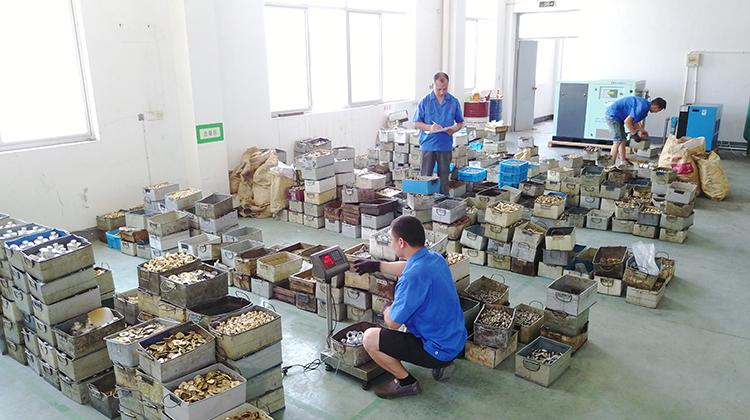 Semi-finished components storage area
Semi-finished components storage area 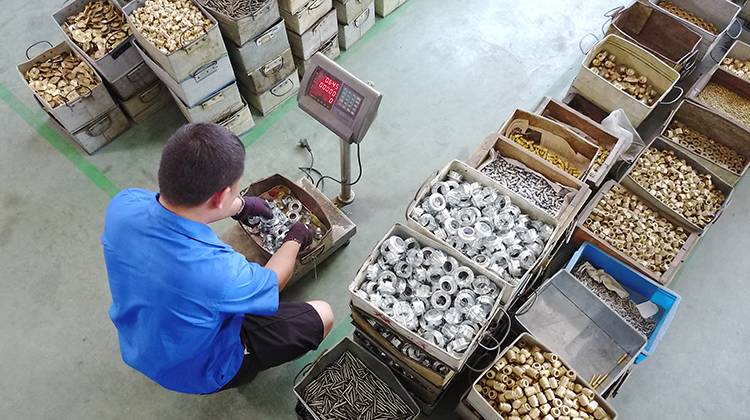 The weighing of the components
The weighing of the components
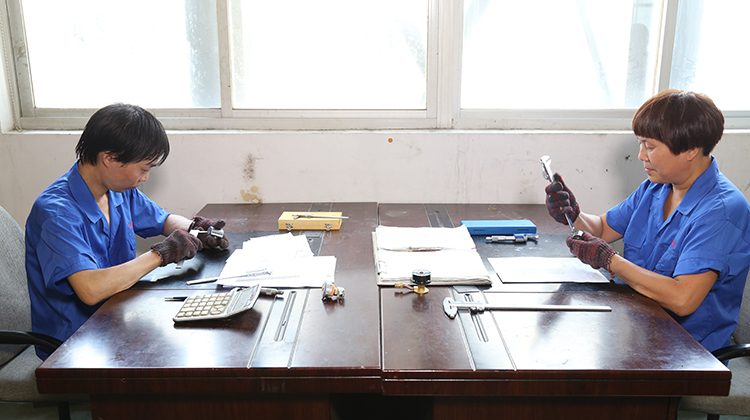 Full inspection on components
Full inspection on components
Our extensive range of testing tools, such as micrometer and vernier caliper, can accomplish a comprehensive range of tests on the manufactured products, including shape, dimension, smoothness, various types of tolerances and fits etc.
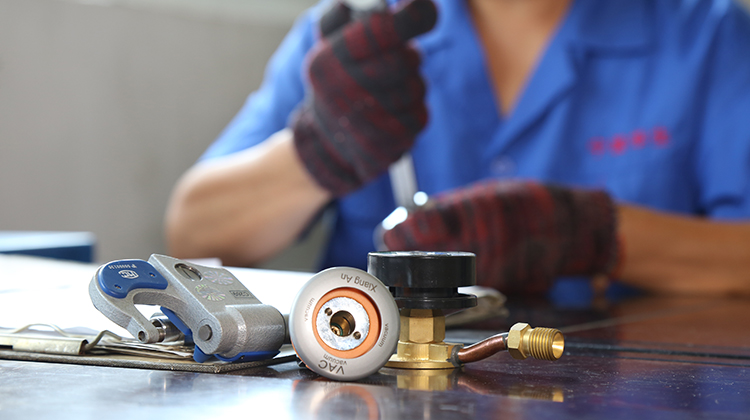 Testing at a glance
Testing at a glance 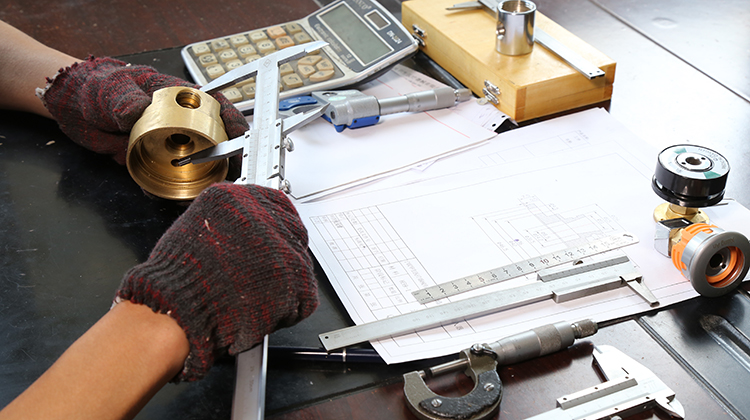 Using a vernier caliper to perform visual inspection
Using a vernier caliper to perform visual inspection
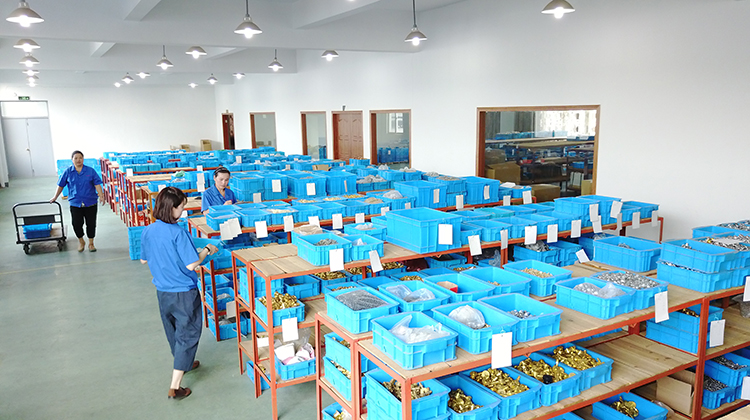 A panorama of the components storage warehouse
A panorama of the components storage warehouse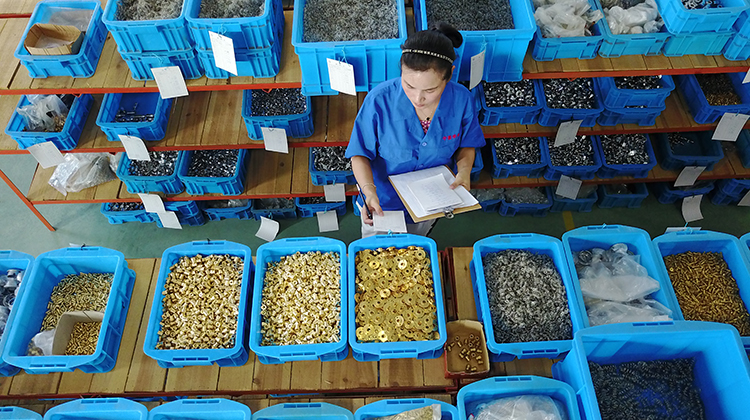 Components are sorted clearly and managed strictly
Components are sorted clearly and managed strictly
Our assembly workshop spans around 200 square meters. It is home to 12 productive full-time employees who average more than 3 years of assembly experience. Seen here is the assembly of a type of wall-mounted oxygen suction unit. First of all, we remove impurities from the main body of the product. Next, we assemble the main components and then assemble the main body of the product. Finally, we tighten the humidification bottle up, and the finished product is completed.
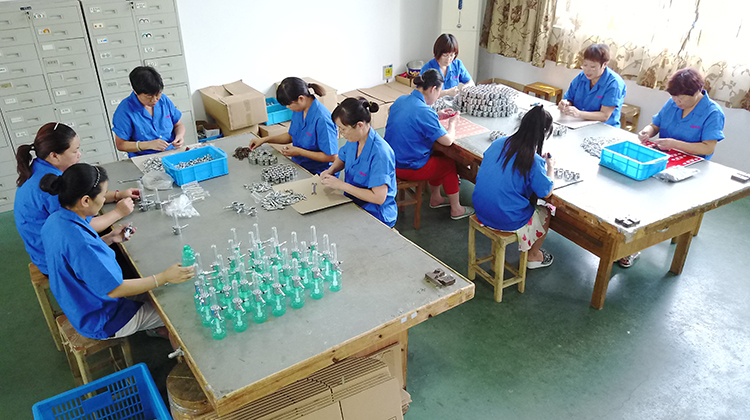 The assembly of the wall-mounted oxygen suction unit
The assembly of the wall-mounted oxygen suction unit
After removal of burrs from the safety connector and the main body of the oxygen suction unit, we need to install the sealing ring, thus enabling patients not to inhale impurities when in use of our product. This can also ensure the component is airtight.
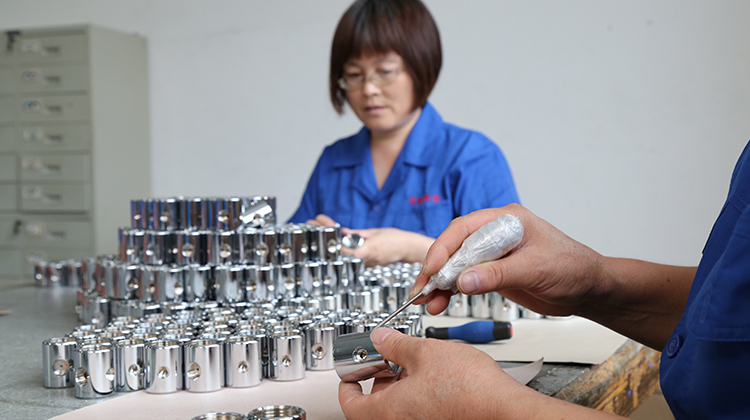 Removal of impurities from the main body of the oxygen suction equipment
Removal of impurities from the main body of the oxygen suction equipment 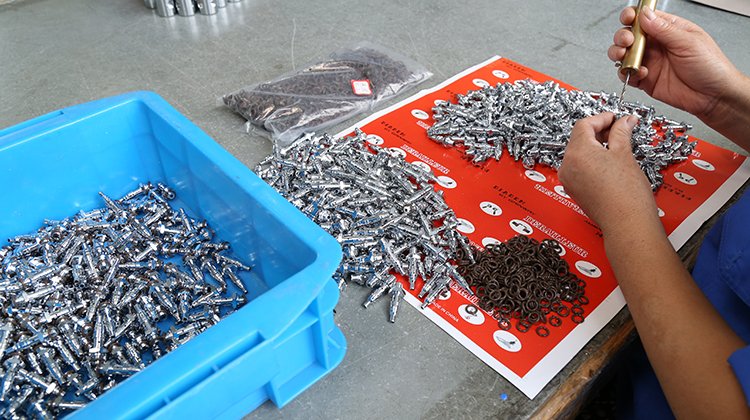 Remove burrs from safety connector and then add the sealing ring.
Remove burrs from safety connector and then add the sealing ring.
We make use of dispensing assembly to ensure that every product is assembled with a high level of precision. Connector tightening is a process used to guarantee no gas leakage under the gas pressure of 0.5kg.
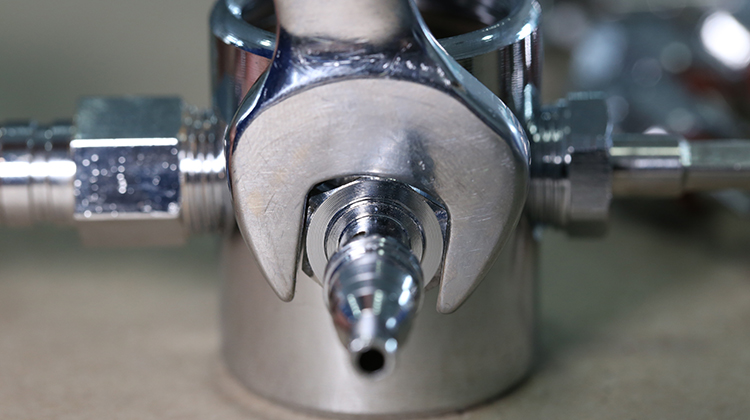 Tightening a connector
Tightening a connector
Pictured here is the key component of the entire product. After preassembly is completed, we can increase efficiency and prevent defective products from entering the market.
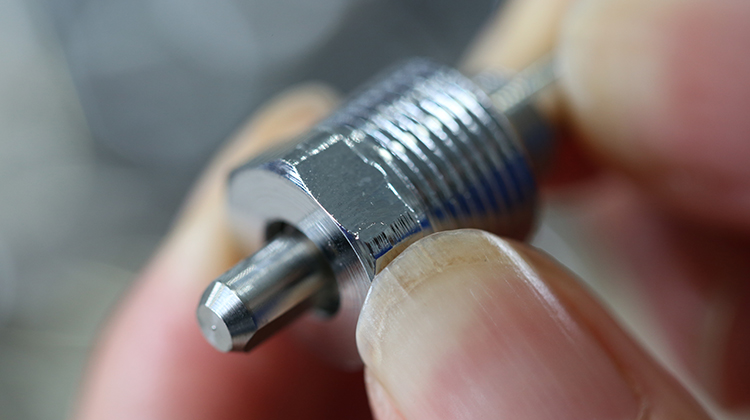 Preassembly of valve rod
Preassembly of valve rod
The flow meter must be assembled in an impurity-free environment. The measuring scale must be perfectly aligned with the regulating valve for ease of operation. Finally, we tighten the outer cover up, and the assembly is completed.
 The assembly of the flow meter
The assembly of the flow meter
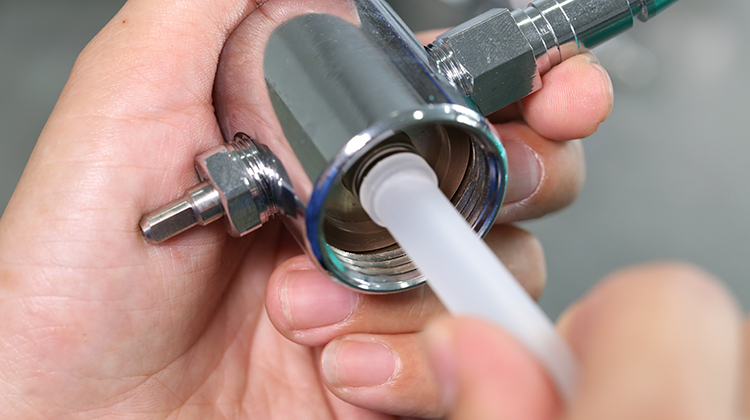 The assembly of the breather pipe
The assembly of the breather pipe 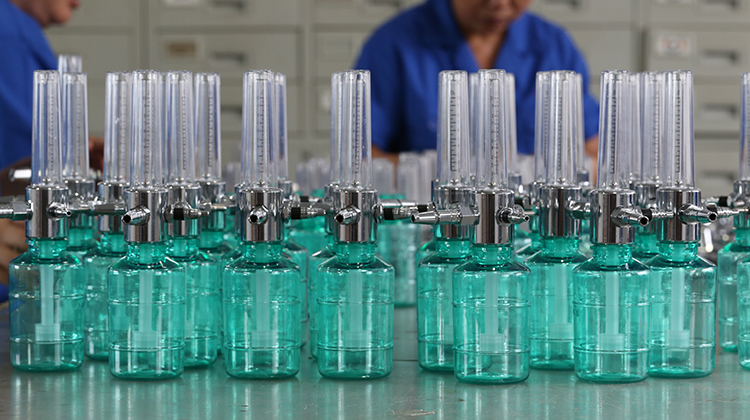 The assembly of the oxygen suction unit is completed.
The assembly of the oxygen suction unit is completed.
In order to ensure the precision of oxygen flow of the oxygen suction equipment, we need to connect this equipment with a gas outlet and a flow meter. Then we adjust this equipment to make the steel ball move forward. In this process, we observe whether the steel ball works well with the reference scale. We promise to keep the error within ±4%.
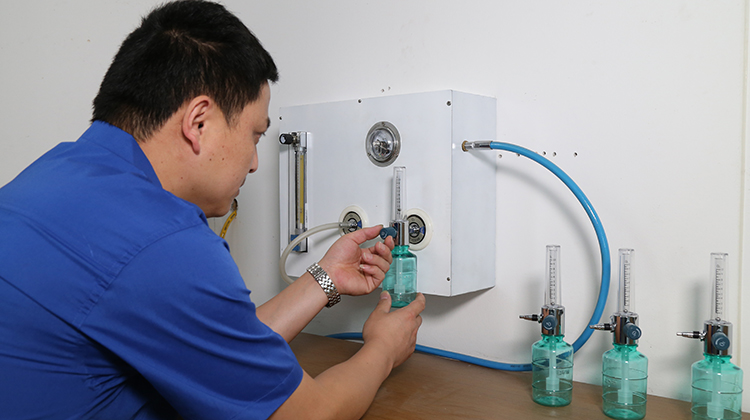 Flow meter accuracy testing
Flow meter accuracy testing 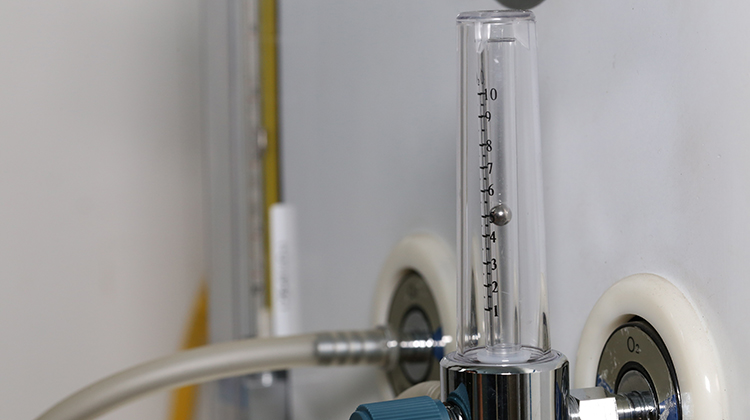 Checking whether the steel ball can work well with the reference scale
Checking whether the steel ball can work well with the reference scale
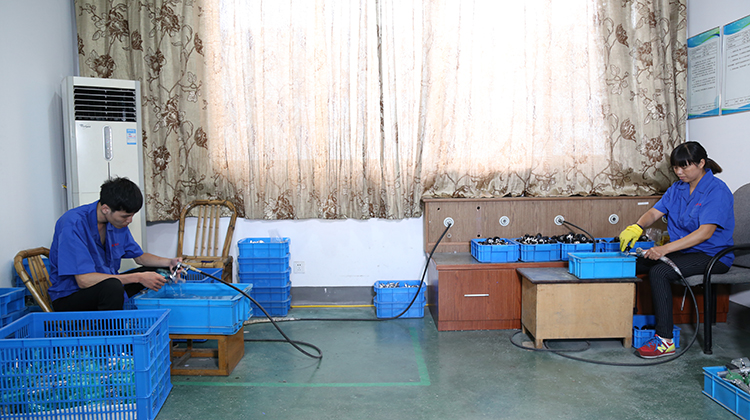 Air tightness testing room
Air tightness testing room
All of the in-house manufactured products must undergo air tightness testing to guarantee no leakage. We test the overall sealing performance of the oxygen suction unit after assembly, and we also check the sealing performance of the adjustable valve rod. Gas outlets are subjected to air tightness testing in a more than 95% ethanol solution. The adoption of ethanol can ensure the metal component of this product is protected from corrosion.
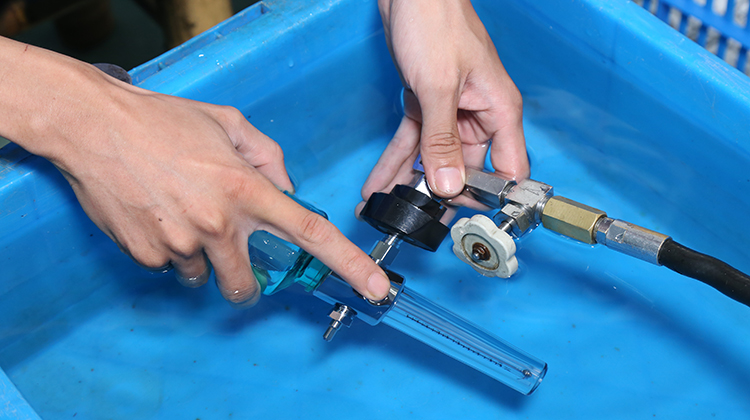 Testing the overall sealing performance of the oxygen suction device
Testing the overall sealing performance of the oxygen suction device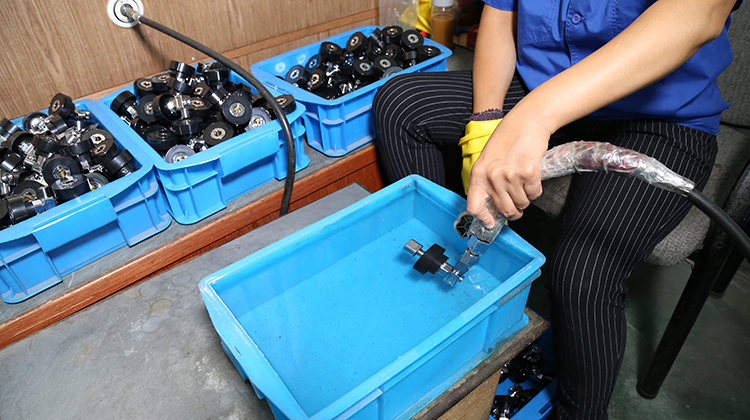 Testing the product in ethanol
Testing the product in ethanol
Ningbo Huasheng Medical Equipment Co., Ltd.
Add.: No. 98, Shunhe Road, Kandun Industrial Park, Cixi City, Zhejiang Province, China
Contact Person: ShuZhen Qian
Tel.:
+86-574-63429999
+86-574-63270698
Fax: +86-574-63270696
Email: 939056290@qq.com

